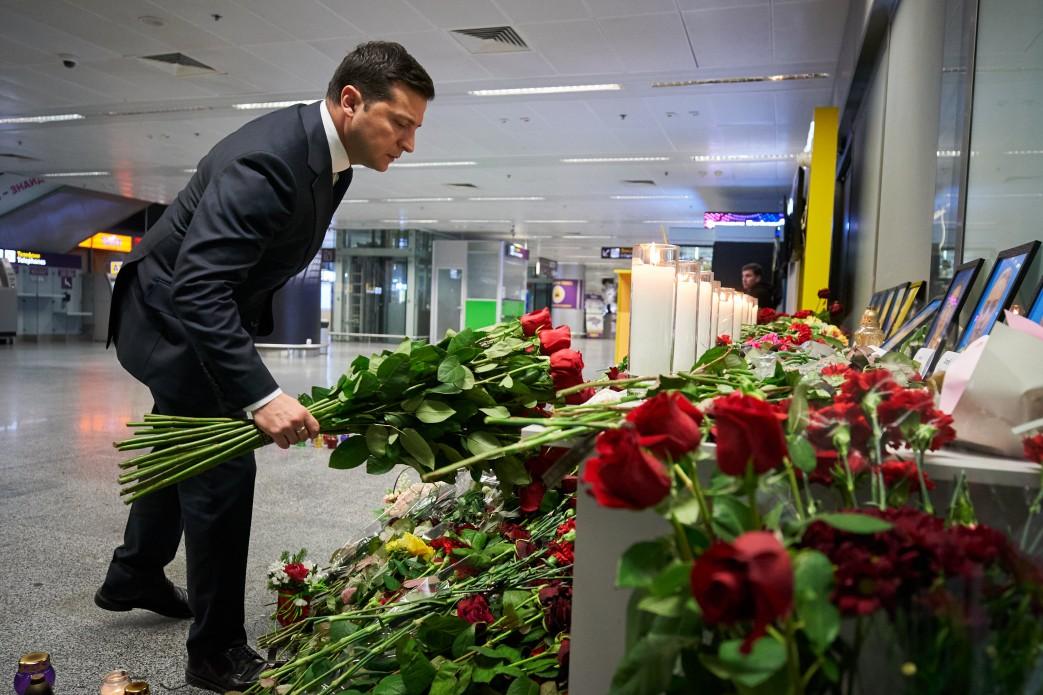PS752 Probe Will Examine Why Iran Did Not Warn Airlines Of Risks

The investigation into Iran’s Jan. 8 downing of Ukraine International Airlines (UIA) Flight PS752 is beginning to take shape, with participants from affected countries urging transparency and a thorough probe into the disaster—from why it happened to why airlines were operating at Tehran’s Imam Khomeini International Airport (IKA) amid elevated military tensions.
“Unfortunately, our flight was at the wrong place, at the wrong time,” UIA president Yevhenii Dykhne said after Iranian senior officials admitted Jan. 11 the Boeing 737 was shot down by Iranian forces. “Any other aircraft could [have been] in its place.”
Ukrainian President Volodymyr Zelensky is pushing for a thorough investigation into the disaster to help answer many questions. Among them: who was responsible, and why Iran permitted airlines to keep operating in and out of Tehran at a time of heightened military tension in the area.
Flight PS752 departed for Kiev, Ukraine, from IKA early in the morning Jan. 8 several hours after Iran launched a ballistic missile attack from inside the country on U.S. forces based in Iraq. Iranian defense forces were put on high alert immediately following the strikes, yet IKA continued to operate as usual. PS752 was shot down about 3 min. into its flight, apparently mistaken for a cruise missile.
“Regrettably, missiles fired due to human error caused the horrific crash of the Ukrainian plane and death of 176 innocent people,” Iran President Hassan Rouhani wrote on Twitter Jan. 11.
“The airport was fully operational and there was no suspension from Iran aviation authorities, no warnings,” Dykhne said.
PS752’s flight path was comparable to others recorded by previous flights on the 5X-weekly route. About 20 aircraft movements took place after the Iranian missile strikes and several took off after PS752 was shot down.
“The crew followed instructions from the air traffic control center in Tehran,” Dykhne said. “It was a routine flight. Communication between cockpit and the airport continued until the very end.”
Iran’s acknowledgement of its role in the disaster removes one major question from the investigation, but many questions remain. Iran’s Aircraft Accident Investigation Board (IAAIB) has extended invitations to key international agencies, including Canada’s Transportation Safety Board (TSB), France’s BEA and the U.S. NTSB to designate representatives to assist in the probe. Levels of participation are unclear, however.
BEA stressed that it was not sending any investigators to Iran at this point, contrary to some media reports. Participation by technical experts from the U.S., including Boeing, will require approval from the U.S. Treasury Department’s Office of Foreign Assets Control.
Canada, which had 57 citizens on the flight, has two aviation safety investigators in Tehran and is preparing to send another team of aircraft recorder experts to support IAAIB, “once the time and place that this activity will take place is confirmed,” TSB said.
“Canada’s role is evolving,” TSB chair Kathy Fox told reporters Jan. 12 in Ottawa. “It remains to be seen how far we’re going to be able to go.”
Fox said that while it will honor IAAIB’s status as the agency in charge per ICAO protocol, the agency will push for transparency and will not sign off on a report that it feels is misleading or incomplete.
“We all want answers, and sharing information is a cornerstone of trust,” Fox said. “The world deserves to know how and why events unfolded as they did.”
One of the areas that investigators will probe is how Iran handled information about the missile strike and its internal response. UIA has faced criticism, but Dykhne said it had no reason to change its approach.
“From the moment our aircraft left Kiev [for the inbound flight], we had no information about upcoming threats. This is the same as when the aircraft took off from Tehran,” he said. “We had no alarming threat. No single aviation agency issued any warning. It is up to the country’s authorities whether to close the airspace or not ... If Iran is firing missiles, then they have to close an airport.”
Regulators, including the U.S. FAA and EASA, issued warnings to airlines following the disaster.







